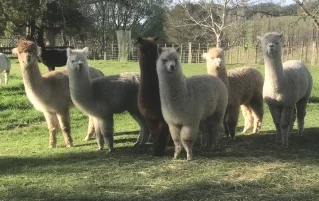
Farm Tours
Farm tours are available for small groups and families to meet, feed, interact with and walk with our alpacas.
For full details and to book your experience of these wonderful animals, please go to our reservation form.
Your new cria has unpacked and is laying on the ground recovering from the stress of birthing. What happens now?
All crias will have a short period of post-birth recovery and then move to the cush position, usually within 15 minutes. Cria are frequently born with an extensive covering of an epidermal membrane which should be carefully peeled away to allow faster drying of the cria's fleece. At minimum, any pieces on the cria's neck should be removed. Dampness can be dried off with a clean towel and the umbilical cord stub disinfected using alcoholic iodine or chlorhexidine solution dip or spray.
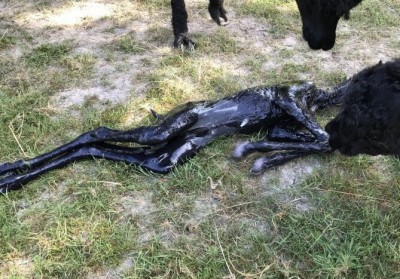
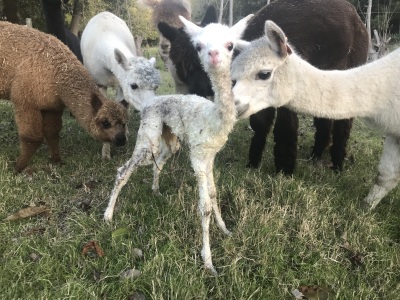
Most crias born around the full-term of 355 days are fully developed. A few will be dysmature, being born within the normal gestation window but have not fully developed inside the uterus. They can be recognised by having low birth weights, unerupted incisors and drooping (floppy) ears, the epidermal membrane being stuck to the mouth and toes and being very slow to stand after birth. Occasionally there is an inability to stand correctly due to tendon laxity. Depending on their degree of dysmaturity, these crias may require assistance. This can range from help in standing and introduction to the dam's teats through to needing to be sheltered with the dam. Very occasionally a particularly weak cria may be born (likely premature) and it will need immediate veterinary help to survive, particularly if weighing less than 5 kg.
Although a single cria is almost always unpacked, twin pregnancies are actually not uncommon. However, most reduce to a single embryo or completely abort by 45 days gestation. Twin live births are fairly rare (reputedly 1 in 10,000 births) and due to low birth weights, one or both crias may not survive. However, there have been cases in New Zealand of both thriving. Twins born at the Nevalea stud, Lucy and Lucas, [6] weighed 3.9 kg at birth and developed to normal adult weights. At the Gilead stud [9] the crias were born weighing 5.5 kg, which developed normally, and 2.8 kg (Timmy, pictured) which only grew to the size of a four-month-old.

The cria will attempt to stand and when stable enough, look to suckle from the dam. The cria's instinct is to head for a dark place to find the dam's teats. A few will need help to locate them as the cria may attempt to suckle from the wrong dam or even head for a dark area in a stable or into a bush. New mothers should be checked to ensure milk flow as waxy plugs block the nipples. The birth to suckling sequence may be achieved in under an hour and most will be there in under two hours.
It is vital that the cria drinks the dam's colostrum as it contains antibodies (IgG) that provide passive immunity for the cria. These antibodies are unable to pass across the alpaca placenta so must be consumed. Other compounds contained in the colostrum provide gut protection from pathogenic bacteria. The antibody concentration in the colostrum fades by over 80% over the first four days after unpacking [67]. To gain the best passive immunity, the cria should consume 10-20% of its body weight of colostrum within the first 24 hours - antibody absorption is greatest in the first 12 hours though.
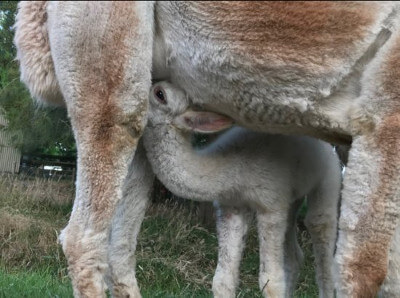
Should any dam be unable or unwilling to feed their new cria, an alternative colostrum should be sourced urgently. Alpaca colostrum is obviously ideal if available but goat or bovine types can also be used. Bovine colostrum is readily sourced from farm suppliers and are usually powders that need to be dissolved in water. It is very important that the manufacturer's instructions are followed especially regarding warming of the solution to 40°C. Never use a microwave or stand the bottle in very hot water otherwise the antibodies needed by the cria will be destroyed.
If bottle feeding is needed, it is important that the owner restricts their interaction with the cria is kept to a minimum. Essentially, this means that the cria should be introduced to the bottle and fed without talking to or touching it. This is to minimise the risk of the cria imprinting on its owner and regarding them as another alpaca. The result of incorect imprinting is that the cria may develop aggressive or inappropriate behaviours towards humans in later years, particularly if it a male. This never ends well for the alpaca.
Dams will only feed their own crias and they check that the right one is feeding by sniffing at the base of the tail where there are scent glands. The cria's tail will be raised at the start of feeding but slowly drop during the session. Opportunist crias may attempt to 'steal' feeds but are quickly pushed away when noticed.
Within 24 hours, the cria will pass meconium, a thick and tarry dark waste composed of cellular material, mucus and ingested amniotic fluid. Should the cria not excrete the meconium, it may become lethargic and require veterinary assistance. Unfortunately, these droppings are easily missed in the paddock so the behaviour of the cria must be watched over this period.
Once normal maternal behaviours have become established, the cria will stay close to their dam for the first week or so. After that, the cria will gradually wander further away from the dam, learning about its new environment. Male cria are generally more curious than females and will stray earlier and further. Other herd members are usually very tolerant of any boisterous cria behaviours but as it gets older, it may be disciplined by spluttering. The cria does need to learn its place in the herd but it doesn't usually stop them from chest ramming adults from behind or jumping up on them!
At six weeks old, the passive immunity provided by the dam's colostrum is fading so vaccine immunisation is needed. Vitamin D and worming injections are also given as part of the health schedule. This subject is covered in detail on the Alpaca Welfare page but in short this is:
In nature, the dam will wean the cria after some 6 months which coincides with an increase in growth rate of the new foetus she is carrying. On New Zealand farms, weaning is usually done at six months or 25 kg body weight. However, some dams will part or fully wean the crias themselves at an earlier age by refusing to feed the cria or only allowing feeds at dusk. Weaning is normally achieved by relocating the crias into a separate paddock, ideally out of sight of their dams and with unrelated gentler adult females for security. This sudden adjustment is stressful and the separation needs to be around 12 weeks; if the crias are reintroduced back to the herd too early, some may successfully suckle their dams and the process will need to be repeated.
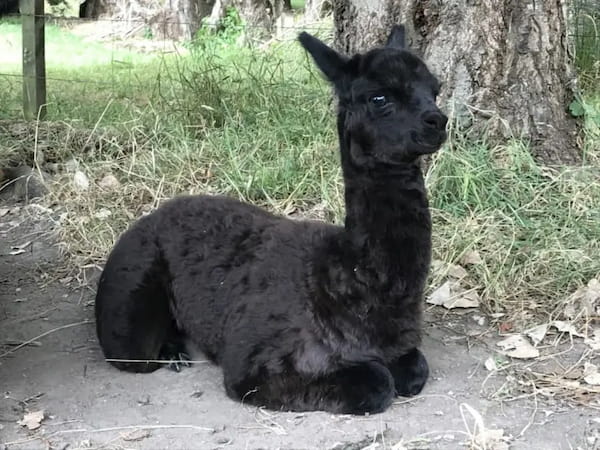
Most of the literature below can be accessed by clicking on the highlighted link. Some links will access the appropriate web page from which the article can be downloaded but others will immediately start downloading the full reference.
6. Ferguson, F. (2018). Nevalea Alpaca farm welcomes rare twins. Stuff Online, 20th February.
9. Rogers, M. and Goffin, H. (2009). Timmy - the tiny twin's story. New Zealand Alpaca, Autumn, pp. 36-39.
48. Bravo, P.W., Garnica, J. and Puma, G. (2009). Cria alpaca body weight and perinatal survival in relation to age of the dam. Anim. Reprod. Sci., 111:2-4, 214-219.
67. Mößler, M., Rychli, K., Reichmann, V.M., Albert, T. and Wittek, T. (2022). Immunoglobulin G concentrations in alpaca colostrum during the first four days after parturition. Animals, 12: 167-175.